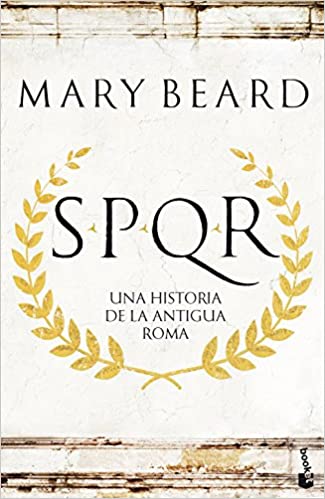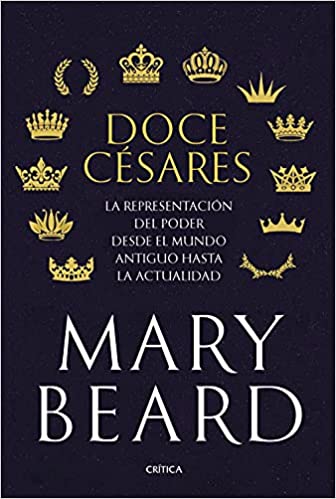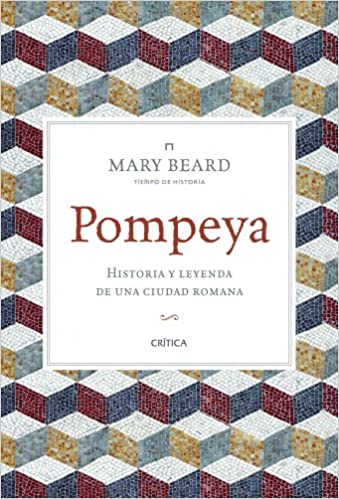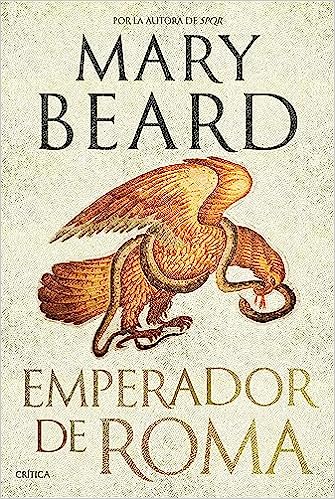The literature in the case of Mary beard it is something circumstantial, a derivative, a channel furrowed between the leafy terrain of his wisdom. Because in the absence of definitively demonstrating that the current civilization is drifting, the distant focus of the classical awakens the last glimpses of what could have been.
That is why it never hurts to peer into a work like the seam in the thicket. There where the narrative recovers that splendor that classicism longs for and protects for those who still aim to discover principles and roots of the human when the world was moving towards knowledge for the tangible and myths for the inexplicable.
The aragonese Irene Vallejo She is an outstanding student of this current. Many others are those who also enter the ancient world in search of long-awaited knowledge and also hope. Another could be Madeline miller. And three women are already going in search of the lost Ithaca ... Let them be the ones who awaken us that taste for the principles of all that we are today, involution through ...
Top 3 recommended books by Mary Beard
SPQR: A History of Ancient Rome
There are books that carry a lifetime's work. The art of synthesis manifests itself impossible in the most learned and pedantic. Beard knew how to face the mission of filling himself with time to know how to synthesize without omitting, with that unattainable horizon of reaching everything that one wants to tell about something as transcendent as the Roman Empire was. Finally Beard managed to brush the dispensable and write down all the irreplaceable in this volume. More than "a story of ...", with that welcome sin of humility that should accompany every sage, it could well be called "the story of ..."
As the culmination of fifty years of study and research on ancient Rome, Mary Beard, a professor at the University of Cambridge, offers us a masterful overview of its history: a story that, she tells us, “after two thousand years, it remains the foundation of our culture and politics, of how we view the world and our place in it. '
A history characterized by incredible founding myths and great political and social institutions, by extraordinary military conquests and spectacular architectural works. Without forgetting the deeds of the most famous personalities of the Roman world: from Cicero trying to avoid Catilina's conspiracy over Julius Caesar, to Octavian's victory over Marco Antonio. We are not, however, before an academic synthesis to use, since in most reviews of this book the qualifiers "masterful" and "entertaining" appear associated.
Twelve Caesars: The Representation of Power from the Ancient World to the Present
After all that had to be told and known about the great Rome, it is time to indulge in the details, aspects as finally as valuable as the most meticulous chronology. Because within each intrahistory we find the ultimate motives, the games of wills that moved vast empires.
What is the face of power like? Who is represented in art and why? In this unique work, Mary Beard - arguably the most prestigious classicist of our day - tells the story of how for more than two millennia the portraits of the rich, powerful and famous of the Western world have been molded from the image of emperors Romans, especially the Twelve Caesars. From the ruthless Julius Caesar to the cruel Domitian, power is depicted in imitation of classical art and disgraced leaders are often caricatured as Nero fiddling while Rome burns.
Beginning with the importance of imperial portraits in Roman politics, this richly illustrated book takes us through two thousand years of art and cultural history, presenting a fresh look at the works of artists from Mantegna to the present day. as well as generations of weavers, cabinetmakers, silversmiths, printers, and potters. More than the story of a simple repetition of images of imperial men and women, Twelve Caesars it is an astonishing story of shifting identities, deliberate or misleading identifications, forgeries, and often ambivalent representations of authority.
Pompeii: History and Legend of a Roman City
Vesuvius carried away the city and buried the legend. With today's disturbing notion that volcanoes are still there, waiting to reconquer new lands, the evocation of Pompeii becomes more dramatic, more human. And the myth grows about a city that could have been punished by the very gods, enraged in fierce lava.
His book has a dual purpose. In the first place, to reconstruct what life was like in Pompeii: the daily jobs of its inhabitants, the government of the city, the pleasures of the body (food, wine, sex and baths), entertainment and games, religion ...
But also, secondly, to combat the myths that have accumulated about its history, starting with the dubious hygiene of the bathrooms or the legendary number of brothels and ending with the reality of the catastrophe, of which it offers us a vision very different from the legend. Mary Beard achieves all this in a fascinating text, which brings to life the most unexpected finds and the little we know about its inhabitants: the priestess Eumachia; Publio Casca, one of César's assassins; gladiators, idols of Pompeian girls ...
Other Recommended Books by Mary Beard
Emperor of Rome
You can never synthesize enough without having to sacrifice something. If in SPQR everything seemed tied up and well tied up, it seems that by reviewing notes, Mary Beard found new threads to pull from to continue telling a story as vast as that of imperial Rome. And of course, a large part of that history remains in the hands of emperors who are always interesting trying to learn even the smallest details.
Control freaks, workaholics or spoiled teenagers? What were the emperors of Rome really like?
In this new book, the author turns her attention to the emperors who ruled the Roman Empire to give us a nuanced and more accurate version of these glorified classical figures. From Julius Caesar (assassinated in 44 BC) to Alexander Severus (assassinated in AD 235), passing through the madman Caligula, the monstrous Nero and the philosopher Marcus Aurelius, Mary Beard covers the life and myths of the great Roman rulers. And it raises big questions for us: what real power did the emperors hold? Who pulled the strings behind the scenes? How was such a vast empire governed? Were the palace walls really that stained with blood?
To give us an answer and bring us a little closer to the imperial reality, Mary Beard follows the emperor's footsteps closely: at home and in the races, on his travels and even on his way to heaven; she introduces us to his wives and lovers, his rivals and slaves, the court jesters and soldiers, and the common people who delivered him letters of appeal. Emperor of Rome takes us straight into the heart of Rome, and our fantasies about what it was like to be a Roman, through a tale like never before told.




